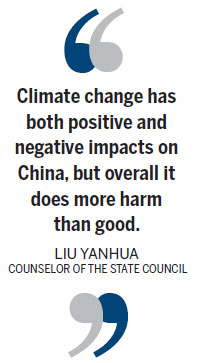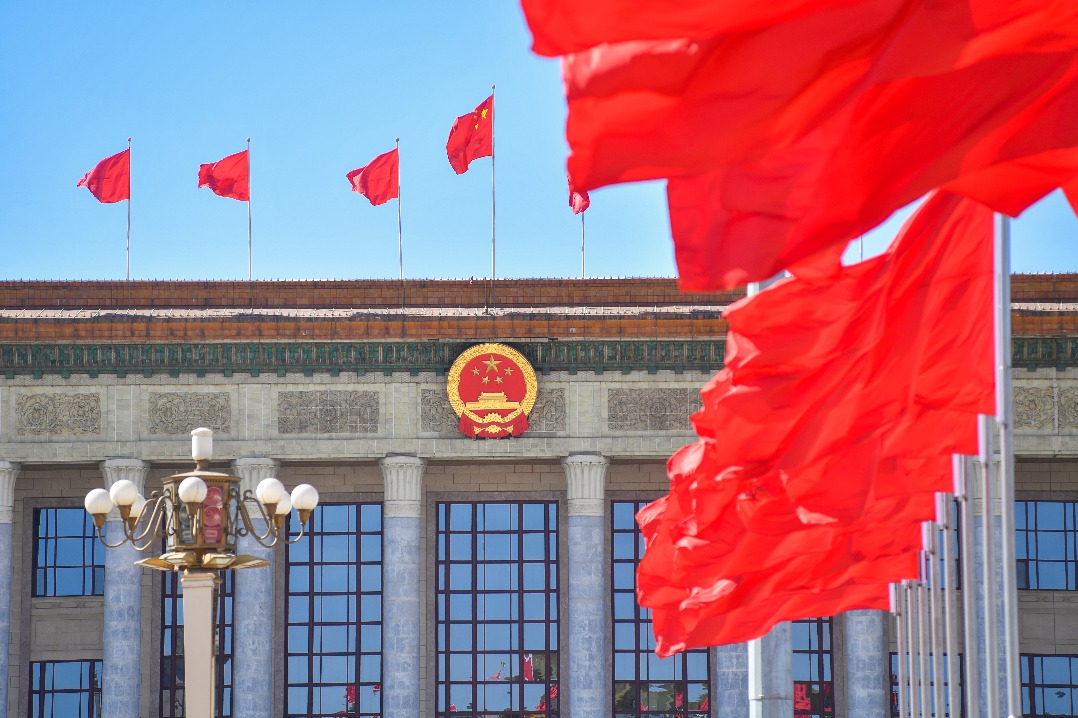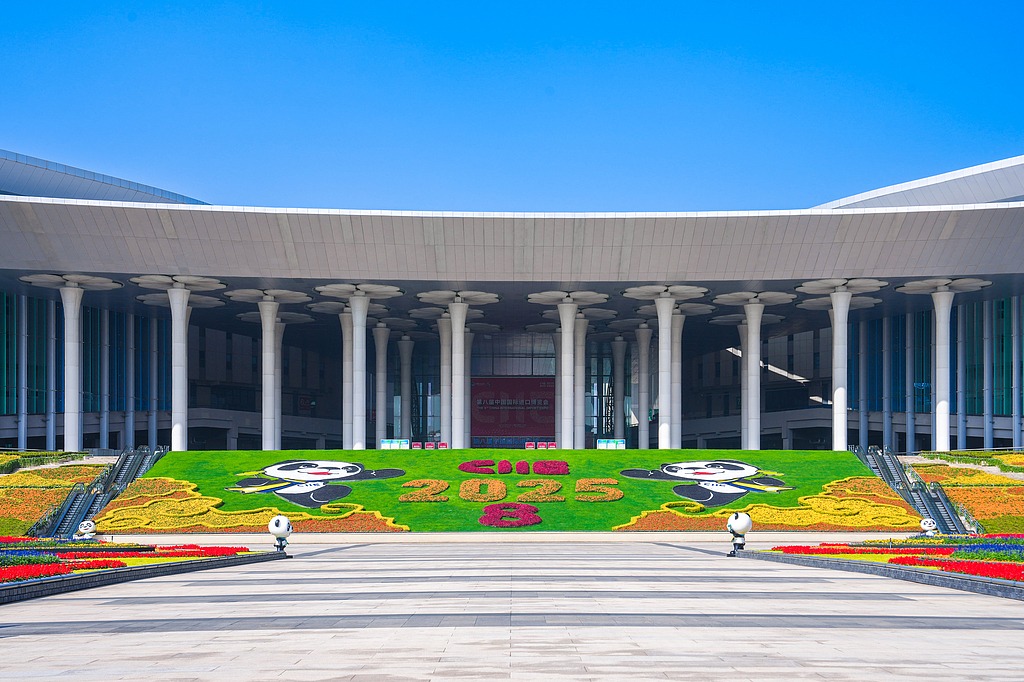China's average temps to rise up to 5 C

Report on nation's climate change impact predicts more droughts and floods
China will face rising temperatures and more extreme weather such as large-scale drought and flooding in the coming years, and sea levels will continue to rise due to the impact of climate change, according to a newly released report.
Temperatures in China will rise by 1.3 C to 5 C by the end of this century, according to the third China national assessment report on climate change released on the sidelines of the United Nations Climate Change Conference in Lima, Peru.
| Environmental activists march at the "People's Climate March" in downtown Lima on Dec 10. Mariana Bazo / Reuters |
"Climate change has both positive and negative impacts on China, but overall it does more harm than good," said Liu Yanhua, counselor of the State Council.
Positive impacts include increased solar and thermal resources for agriculture, expanded plantation areas for some crops and additional benefits to forests and other ecosystems.
At the same time, negative impacts are felt on numbers fronts, including yields and quality of grain, water resources, marine environment and ecosystems and cities, Liu said.
As the largest developing country, China is very vulnerable to climate change. More than 70 percent of natural disasters are associated with extreme weather and climate events.
More apparent adverse impacts of climate change would be found in agriculture, cities, transport, infrastructure, the South-North Water Diversion Project, power grids and other energy facilities, said the report.
National mean precipitation will grow by 2 to 5 percent in the coming years, albeit precipitation changes in South China will not be significant, according to the report.
Under the future impact of climate change, the total water resources will likely be reduced by 5 percent, China's food security risk index will first fall and then rise, and security issues for water, ecosystems, food and energy will be further intertwined.
As a country still in the process of industrialization and urbanization, China's carbon dioxide emissions will continue to grow.
In a recent joint announcement, leaders of China and the United States set new targets for cutting greenhouse emissions. China said it intends to peak its carbon dioxide emissions around 2030.
Li Gao, deputy director-general of the department of climate change of the National Development and Reform Commission, said the country has made low-carbon development a core element for designing the nation's ecological civilization plan.
China will step up its efforts in hammering out a legislative plan on climate change, said Li at a side event held during the talks in Lima.

The Chinese government recognizes the existence of climate change and the impact of human activity. The nation has organized an expert team to study what would be the corresponding policies that should be put in place from now to 2050 to realize a low-carbon transition.
China will reasonably control the incremental part of its energy consumption and strictly control its coal consumption, said Li.
Liu said China's current development stage and resource endowment make its response to climate change harder and more costly.
Reducing carbon dioxide emissions by one metric ton costs the government 167 yuan ($27), it said.
The good news is that restructuring has been made a top priority, and innovation of technologies, streamlined economic structure and expansion of the service sector will all contribute to energy savings and emissions reductions.
If existing units are replaced with innovative technology, it could help reduce emissions by 420 to 700 million tons in 2030, said the report.
By 2030, carbon dioxide emissions from the energy supply sector are predicted to be around 4.5 billion tons, with 770 million tons from industrial processes and about 492 to 811 million tons through afforestation and sustainable forest management, according to the report.
With cleaner coal technology, the current power generation efficiency will increase by 4 to 7 percent, which is significant for a country that relies highly on coal. Promotion of carbon capture, utilization and storage can reduce hundreds of millions of tons in carbon dioxide emissions per year.
Liu called on the nation to continue to advance its climate change research and technology innovation so as to respond to climate change in a more scientific way.
Policymakers should synergize actions for addressing climate change with water, energy, food and ecosystems and enhance the coordination between climate change policies and other policies, he said.
A whole package of adaptation measures includes climate change impacts, vulnerability, risks and assistance to all sectors of the economy in building decision-making processes on climate change adaptation.
Initiatives adopted by the business community and all other sectors in cutting greenhouse gas emissions should be welcomed and the greater role of market and price mechanisms should be put in place.
International cooperation on climate change would also be important. China has said it would establish a South-South Cooperation Fund to help developing countries address climate change and beginning next year double its existing aid in this area to developing countries.
Since 2011, China has spent 270 million yuan in helping developing countries enhance capacities of coping with climate change and has trained more than 2,000 officials from more than 120 countries.
China also learned from other countries' experiences and lessons.
"As a developing country, China will try our best to cooperate with other developing nations to actively act to tackle climate change," said Xie Zhenhua, head of the Chinese delegation at the talks in Lima.
"It's a very good initiative that we very much welcome," said Christiana Figueres, executive secretary of the United Nations Framework Convention on Climate Change.
"Inspired by the leadership of China," Figueres said, the secretariat of the convention is going to open up a South-South Fund, which will mainly focus on adaptation knowledge sharing.
The third China national assessment report also finds the average land warming in China in the 1909-2011 period was in a range of 0.9 to 1.5 C, according to the latest instrumental records on temperature in the past century.
Glaciers in China retreated by about 10.1 percent and permafrost was reduced by about 18.6 percent over the period from 1970 to the early 21st century.
Veteran glaciologists like Liu Shiyin, professor at the Chinese Academy of Sciences, have closely watched the glaciers for decades and saw signs of obvious shrinkage.
"A large number of small glaciers have shrunk and disappeared in China in the past 50 to 60 years. Glaciers are very sensitive to global warming," he said.
The rapid emergence of new factories, roads and mines in recent years have contributed to rising temperatures in these areas. More small glaciers will disappear in the coming 20 to 40 years, he said.
China's coastal sea level rose at a rate of 2.9 mm per year between 1980 and 2012, above the global average.
lanlan@chinadaily.com.cn
(China Daily European Weekly 12/12/2014 page22)
Today's Top News
- Shenzhou XX crew's return trip delayed due to space debris risk
- Ever-evolving Canton Fair highlights China's commitment to innovation, global cooperation
- 8th China International Import Expo opens in Shanghai
- China postpones Shenzhou XX return mission
- Xi, Fiji president exchange congratulations on 50th anniversary of ties
- AI can boost energy security in APEC































